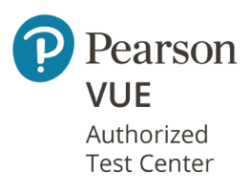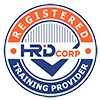Course Details
Topic 1 Prepare to maintain SQL databases on Azure
- Describe Microsoft Intelligent Data Platform roles
- Understand SQL Server in an Azure virtual machine
- Design Azure SQL Database for cloud-native applications
- Explore Azure SQL Database Managed Instance
LU2 Plan and implement data platform resources
Topic 2 Deploy IaaS solutions with Azure SQL
- Explain IaaS options to deploy SQL Server in Azure
- Understand hybrid scenarios
- Explore performance and security
- Explain high availability and disaster recovery options
- Exercise: Provision a SQL Server on an Azure Virtual Machine
Topic 3 Deploy PaaS solutions with Azure SQL
- Explain PaaS options for deploying SQL Server in Azure
- Explore single SQL database
- Deploy SQL database elastic pool
- Understand SQL database hyperscale
- Examine SQL managed instance
- Describe SQL Edge
- Exercise: Deploy an Azure SQL Database
Topic 4 Evaluate strategies for migrating to Azure SQL
- Understand compatibility level
- Understand Azure preview features
- Describe Azure database migration options
Topic 5 Migrate SQL Server workloads to Azure SQL Database
- Choose the right Azure SQL Database feature
- Use Azure SQL migration extension to migrate to Azure SQL Database
- Explore Data Migration Assistant to migrate to Azure SQL Database
- Migrate to Azure SQL Database using BACPAC
- Use an online method to migrate to Azure SQL Database
- Move data to Azure SQL Database
- Exercise: Migrate a SQL Server database to Azure SQL Database
Topic 6 Migrate SQL workloads to Azure Managed Instances
- Evaluate migration scenarios to SQL Database Managed Instance
- Migrate to SQL Database Managed Instance
- Load and Move data to SQL Database Managed Instance
LU3 Implement a secure environment for a database service
Topic 7 Configure database authentication and authorization
- Describe Active Directory and Microsoft Entra ID
- Describe authentication and identities
- Describe Security Principals
- Describe database and object permissions
- Identify authentication and authorization failures
- Exercise: Authorize Access to Azure SQL Database with Microsoft Entra ID
Topic 8 Protect data in-transit and at rest
- Explore Transparent Data Encryption
- Configure server and database firewall rules
- Explain object encryption and secure enclaves
- Enable encrypted connections
- Describe SQL injection
- Understand Azure Key Vault
- Exercise: Configure a server-based firewall rule using the Azure portal
Topic 9 Implement compliance controls for sensitive data
- Explore data classification
- Explore server and database audit
- Implement Dynamic Data Masking
- Implement Row Level security
- Understand Microsoft Defender for SQL
- Explore Azure SQL Database Ledger
- Implement Azure Purview
- Exercise: Enable Microsoft Defender for SQL and Data Classification
LU4 Monitor and optimize operational resources in Azure SQL
Topic 10 Describe performance monitoring
- Describe performance monitoring tools
- Describe critical performance metrics
- Establish baseline metrics
- Explore extended events
- Describe Azure SQL Insights
- Explore Query Performance Insight
- Exercise: Isolate problems with monitoring
Topic 11 Configure SQL Server resources for optimal performance
- Explain how to optimize Azure storage for SQL Server virtual machines
- Describe virtual machine resizing
- Optimize database storage
- Control SQL Server resources
Topic 12 Configure databases for optimal performance
- Explore database maintenance checks
- Describe database scoped configuration options
- Describe automatic tuning
- Describe intelligent query processing
- Exercise: Detect and correct fragmentation issues
LU5 Optimize query performance in Azure SQL
Topic 13 Explore query performance optimization
- Understand query plans
- Explain estimated and actual query plans
- Describe dynamic management views and functions
- Explore Query Store
- Identify problematic query plans
- Describe blocking and locking
- Exercise: Identify and resolve blocking issues
Topic 14 Explore performance-based design
- Describe normalization
- Choose appropriate data types
- Design indexes
- Exercise: Identify database design issues
Topic 15 Evaluate performance improvements
- Describe wait statistics
- Tune and maintain indexes
- Understand query hints
- Exercise: Isolate problem areas in poorly performing queries
LU6 Automate database tasks for Azure SQL
Topic 16 Automate deployment of database resources
- Describe deployment models in Azure
- Automate deployment by using Azure Resource Manager templates and Bicep
- Automate deployment by using PowerShell
- Automate deployment by using Azure CLI
- Exercise: Deploy an Azure SQL Database using an Azure Resource Manager template
Topic 17 Create and manage SQL Agent jobs
- Create a SQL Server maintenance plan
- Describe task status notifications
- Knowledge check
- Exercise: Create a CPU status alert for a SQL Server
- Topic 18 Manage Azure PaaS tasks using automation
- Explore Elastic jobs
- Understand Azure Automation
- Build an automation runbook
- Automate database workflows by using Logic Apps
- Monitor automated tasks
- Exercise: Deploy an automation runbook to automatically rebuild indexes
LU7 Plan and implement a high availability and disaster recovery environment
Topic 19 Describe high availability and disaster recovery strategies
- Describe recovery time objective and recovery point objective
- Explore high availability and disaster recovery options
- Describe Azure high availability and disaster recovery features for Azure Virtual Machines
- Describe high availability and disaster recovery options for PaaS deployments
- Explore an IaaS high availability and disaster recovery solution
- Describe hybrid solutions
Topic 20 Explore IaaS and PaaS solutions for high availability and disaster recovery
- Describe failover clusters in Windows Server
- Configure Always-on availability groups
- Describe temporal tables in Azure SQL Database
- Describe active geo-replication for Azure SQL Database
- Explore auto-failover groups for Azure SQL Database and Azure SQL Managed Instance
- Exercise: Configure geo replication for Azure SQL Database
Topic 21 Back up and restore databases
- Back up and restore SQL Server running on Azure virtual machines
- Back up a SQL Server virtual machine
- Back up and restore a database using Azure SQL Database
- Exercise: Backup to URL
Course Info
Prerequisites
- 2+ years of IT administration experience with an emphasis on security
- CompTIA Network+ certification is recommended
- Knowledge about configuring IPs and VLANs
HRDF Funding
Please refer to this video https://youtu.be/Kzpd-V1F9Xs
1- HRD Corp Grant Helper
How to submit grant applications for HRD Corp Claimable Courses
2- Employers are required to apply for the grant at least one week before training commences.
Employers must submit their applications with supporting documents, including invoices/quotations, trainer profiles, training schedule and course content.
3- First, Login to Employer’s e-TRIS account -https://etris.hrdcorp.gov.my
Second, Click Application
4- Click Grant on the left side under Applications
5- Click Apply Grant on the left side under Applications
6- Click Apply
7- Choose a Scheme Code and select HRD Corp Claimable Courses: Skim Bantuan Latihan Khas. Then, click Apply
8- Scheme Code represents all types of training that suit the requirements provided by HRD Corp. Below are the list of schemes offered by HRD Corp:
9- Select your Immediate Officer and click Next
10- Select a Training Provider, then click Next
11- Please select a training programme from the list, then key in all the required details and click Next
Select your desired training programme.
Give an explanation on why the participant is required to attend the training. E.g., related to their tasks/ career development, etc.
Explain the background and objective of this training.
Select a relevant focus area. For Employer-Specific Courses, select ‘Not Applicable’.
12- If the training programme is a micro-credential programme, you are required to complete these 3 fields. Save and click Next
Insert MiCAS Application number
13- Based on the nine (9) pillars listed below, HRD Corp Focus Area Courses are closely tied to support government initiatives towards nation building. As such, courses offered through the HRD Corp Focus Areas are designed to provide the workforce with skills required for current and future demands. Details of the focus areas are as follows:
14- Please select a Course Title and Type of Training
15- Select the correct type of training according to the actual type of training, or as mentioned in the training brochure:
16- Please key in the Training Location and click Next
17- Please select the Level of Certification and click Next
18- Please follow the instructions and key in trainee details
19- Click Add Batch, then click Save
20- Click Add Trainee Details
21- Please key in all the required details, then click Add
22- Click Add if there are more participants. Once done, click Save
23- Click Next
24- Please key in the course fees and allowance details, then click Save
25- Estimated cost includes the course fees/external trainer fees, allowances, and consumable training materials. Please comply with the HRD Corp Allowable Cost Matrix.
26- Select Upfront Payment to Training Provider and key in the percentage from 0% to 30%. Then, click Save and Next
27- Complete the declaration form and select a desired officer
28- Add all the required documents, then click Add Attachment. Then, click Save and Submit Application
29- Once the New Grant Application is successfully submitted, the Grant Officer will evaluate the application accordingly. The application may be queried if additional information is required.
The application status will be updated via the employer’s dashboard, email, and the e-TRiS inbox.
Job Roles
- Database Administrator
- Azure Administrator
- SQL Server Developer
- Data Analyst
- Business Intelligence Developer
- Cloud Solutions Architect
- IT Manager
- Systems Analyst
- Infrastructure Engineer
- DevOps Engineer
- Data Engineer
- Application Developer
- Software Engineer
- Technical Consultant
- Data Architect
Trainers
Peter Cheong : I am a ACLP certied trainer. Specialise In IT related knowlege and conduct IT Training which Include Microsoft Window Server Technology (Wintel) and Linux - Centos/Red Hat. Comptia ,ITIL , Motorola Solution Trunking System and Cisco Networking. I was worked in Motorola Solutions Conduct Motorola Astro 25 Trunking System For Police Force Malaysia (RMPnet),Taiwan Navy, Indonesia METRO POLDA (Police Force). After that I Join As IT Group Manager For W-Group which include 17 subsidiaries Companies in Real Estate Developer,Plantation, Building Management Services ,Contruction and also Fiber Opti Service Provider in Sabah,Malaysia.
Truman Ng: I am a ACLP certified trainer. With In-depth and diversified experiences from Project Management DevOps, Blockchain, Project Management, Education, IT and even Numerology, I am passionate to meet good people and generate new ideas, in pursuit of realization of better world!














